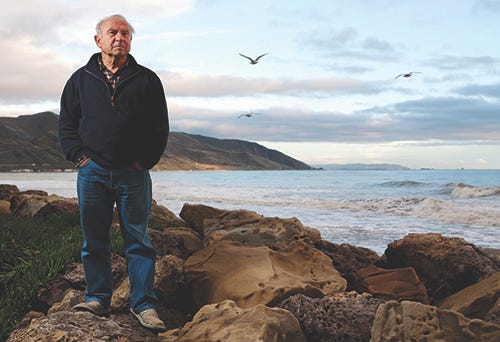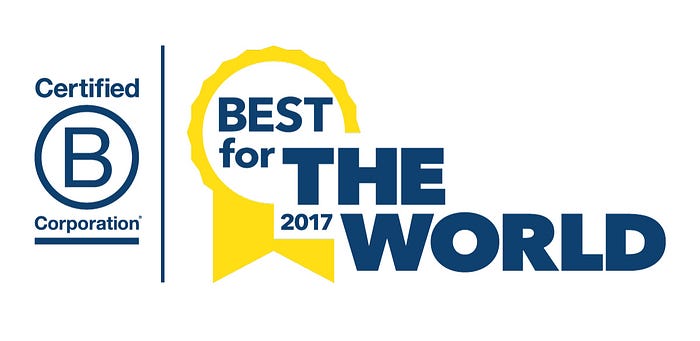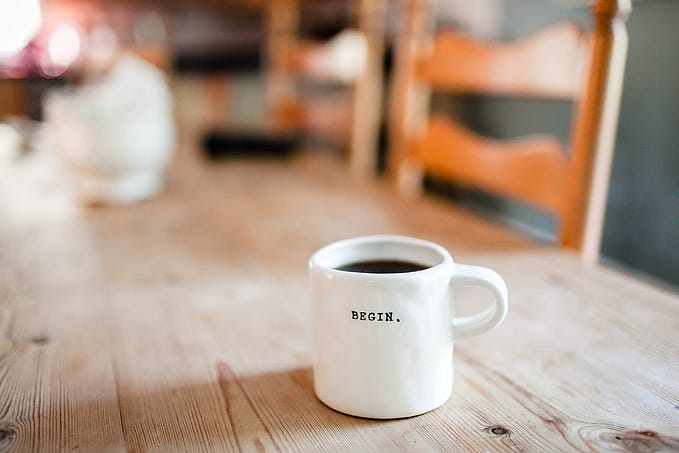The Patagonia Adventure: Yvon Chouinard’s Stubborn Desire to Redefine Business
An Inspiring Business Leader Who Built a Clothing Brand Dedicated to Environmental Stewardship
Yvon Chouinard, founder of Patagonia, takes environmental impact seriously. Environmental stewardship is a main tenet of Patagonia’s mission statement, and why Chouinard is one of the world’s most inspiring business leaders.
By Marc Gunther

Photo by Lucia Griggi/Redux Images
This article was originally published in B Magazine.
Nearly 60 years ago, Yvon Chouinard bought a few tools at a junkyard, taught himself blacksmithing and made rock-climbing hardware that he sold from the trunk of his car. Chouinard had no lofty goal in mind. He simply wanted to make enough money to go climbing and to make better climbing equipment. Even after he hired a few friends, rented space and formed a company called Chouinard Equipment, its first catalog — a one-page sheet of items and prices — warned customers not to expect fast delivery during the summer. That was climbing season.
Those humble beginnings spawned Patagonia, the global outdoor clothing and gear company widely admired for its values-laden business practices and financial success. Chouinard (pronounced shwee-nar) didn’t set out to make Patagonia one of the world’s most socially responsible and influential companies. But he has continued to do business his own way by defying conventional business wisdom. How? By putting the earth first, by making products that last, by telling customers to buy fewer of them, by sharing earnings with grassroots environmental groups, by spreading the gospel of sustainability far and wide, and, yes, by telling people who work there that, so long as their jobs get done, they can surf when the waves are up, ski when the powder’s fresh, and climb mountains when the urge strikes.

Patagonia is a 2017 Best for the World honoree. Find the full list of Best for the World companies and all of our stories about these companies setting the gold standard for people using business as a force for good.
Patagonia because the company is not just an eco-conscious brand trying to manage its own environmental-impact footprint. It’s a force for change in business and in the world.
“I’m hoping to influence more companies to do the right thing,” Chouinard tells B Magazine of environmental stewardship in business. And that he has. The world’s biggest retailer, Wal-Mart, turned to Chouinard and Patagonia for advice as it sought ways to become more sustainable.
Today, at age 77, as his company approaches $1 billion in sales, Chouinard is looking for fresh summits. His company is expanding into food, venture investing and residential solar power — none directly related to clothing, but all aligned with the goals and mission of Patagonia. “I don’t think people have thought deeply about what can be done with agriculture,” Chouinard says. “I look at it as an opportunity.”

Photo by Kyle Sparks/Courtesy of Patagonia
As befits a world-class climber and inveterate adventurer, Chouinard’s ascent to his level of influence and success came with its share of stumbles and course corrections. The company’s biggest hurdle — really, it was a full-blown financial and existential crisis — was triggered by a period of explosive growth. The business wouldn’t exist today if Chouinard hadn’t examined its reason for existence and continually measured its ultimate impact on the world with the goal to do the most good and the least harm.
A Look at Patagonia’s Environmental Impact: Yvon Asks, ‘Why are We in Business, Anyway?’
Success almost spoiled Patagonia. It happened long after Chouinard Equipment morphed into Patagonia, and Chouinard learned a lesson that has guided him ever since: The devotion to quality that made his climbing-tools business a success applied equally to his clothing enterprise.
“I’m a product-driven person,” he says. “I look at products and say, ‘I can make a better one of those.’”
Patagonia began in 1973 by selling clothes designed for the outdoors to adventurers, who loved its tough, colorful rugby shirts and “standup shorts” (still available, for $59), which were originally made of duck canvas and stood up on the table when they came off the sewing machines. The brand soon appealed to the less adventurous as well.
“All of a sudden you have New Yorkers buying these things to get in their gold edition Jeep Cherokees to drive to their Connecticut homes,” Chouinard jokes. By the late 1980s, the company was growing by 30 percent to 50 percent a year and borrowing heavily to open new stores and sales offices around the world. “We were strung out by growth,” he says.
A recession hit in 1990, and Patagonia’s primary lender pulled back. Chouinard was forced to close offices and showrooms, and he laid off 20 percent of the company’s workforce, including the CEO and chief operating officer. Chouinard says, “It was the worst thing I’ve ever had to go through. A lot of these people were my friends, and it was absolutely my fault.”
After they survived the downturn, Chouinard and about a dozen senior executives made a group trip of self-discovery to the mountains of Patagonia, the wild region at the southern tip of South America that is the company’s namesake. Chouinard asked his team, “Why are we in business, anyway?”
They decided, first of all, that the company should be dedicated to making the best-quality products, which are durable, simple and require little care. As Chouinard once put it, “You should be able to wash travel clothes in a sink or a cooking pot, then hang them out to dry in a hut and still look decent for the plane ride home.” To Patagonia, importantly, quality also means doing minimal harm to the environment.

Photo by Kyle Sparks/Courtesy of Patagonia
The executive team decided it wanted the company to support environmental causes with its profits. This goal eventually led Chouinard and Patagonia to help found 1% for the Planet, a group of more than 1,200 companies and brands that have pledged to give at least 1 percent of annual sales to nonprofit environmental groups.
The Patagonia trip was a watershed moment. “I knew, after 35 years, why I was in business,” Chouinard wrote in Let My People Go Surfing: The Education of a Reluctant Businessman, his 2005 book. “I wanted to create in Patagonia a model other businesses could look to in their own searches for environmental stewardship and sustainability, just as our pitons and ice axes were models for other equipment manufacturers.”
When they returned to California, Chouinard and his colleagues summed up their thinking in a mission statement that has steered Patagonia since: “Build the best product, cause no unnecessary harm, use business to inspire and implement solutions to the environmental crisis.”
To instill the newly defined value system in the staff, Chouinard led employees on weeklong adventure trips to places like Yosemite and the Marin Headlands.
A Rebel, a Misfit, a Student of Zen: The Transformation to an Inspiring Business Leader
It takes an unconventional person to start an unconventional company. While most people spend their 20s in college or starting a career, Chouinard roamed. He traveled to Yosemite, the Canadian Rockies, the Shawangunk Mountains in New York, the Peak District in England and the Alps. Some years, he slept for 200 days or more in his army-surplus sleeping bag under the stars. He once spent 18 days in an Arizona jail on a charge of “wandering around aimlessly with no apparent means of support.”
Even after starting Patagonia in the ’70s, Chouinard continued to think of himself as a climber, a surfer, a kayaker, a skier, a blacksmith. Anything but a suit. He viewed politicians and businessmen as sleazy and corporations as “the source of all evil.” Chouinard was, by his account, a rebel, a misfit and a student of Zen whose heroes were John Muir, Henry David Thoreau and Ralph Waldo Emerson.
No one seeking a traditional business career would have come to work at Patagonia in those days. “We attracted bright, restless, unconventional people,” says Chouinard. “I don’t like anybody to tell me what to do, and I don’t like to tell anybody else what to do.” At Patagonia, MBA stands for Management by Absence. “I’m gone from May to November, and I probably call in just a few times,” Chouinard says. “It works.”
Patagonia’s dedication to quality reflects the reason Chouinard and his colleagues began to make equipment — to create better products for themselves to use. They redesigned just about every climbing tool, most famously when they replaced hard steel pitons, which disfigured rocks when hammered into cracks as climbers ascended, with aluminum chocks that did less damage. They made clothes functional and tough because those were the kinds of clothes they wanted to wear.
But as the company grew, Chouinard realized that Patagonia could no longer rely on his intuition and innovations, or even those of his team. Taking the company’s approach to design and manufacturing to the next level required science.
The Materials Evolution: Organic Cotton Takes Hold
In 1994, Patagonia conducted its first environmental impact assessment report, which included life-cycle analyses of the fibers it used the most: cotton, wool, polyester and nylon. Industrially grown cotton was the worst; the company found that 10 percent of all agricultural chemicals in the United States were used to produce cotton. Even today, cotton is grown on 2.4 percent of the world’s cropland, yet it accounts for 24 percent and 11 percent of global sales of insecticides and pesticides respectively, according to the World Wildlife Fund.

Photo by Tim Davis/Courtesy of Patagonia
Chouinard decided that Patagonia had to switch to organic cotton. He gave the company 18 months to do so and pushed forward despite higher costs. It wasn’t easy. Organic cotton was not available in sufficient quantities through brokers, so the company had to go directly to farmers. Its ginners and spinners had to be persuaded to work with organic cotton, which has more leaves and stems than conventional cotton and is, therefore, more difficult to spin. But by 1996, all Patagonia garments made of cotton were organic, and they have been ever since.
Of course, bold, sometimes revolutionary approaches to product improvement have always been part of the company’s personality. “I don’t think we could have made the change to organic cotton if we hadn’t made the change from pitons to chocks,” says Vincent Stanley, who is Chouinard’s nephew and co-author with Chouinard of The Responsible Company: What We’ve Learned from Patagonia’s First 40 Years. “It gave us a cultural confidence.”
The company’s leaders felt they had to take responsibility for every link in its supply chain. “Leading an examined life in business is a pain in the ass,” Chouinard once said. Even so, Patagonia is constantly raising the standards for its materials and suppliers.
The evolution of its fleece jackets is a case in point. They were introduced in the 1980s in collaboration with Malden Mills in Massachusetts, which developed technology to turn petroleum-based polyester into a low-cost, lightweight, insulated fleece that was branded as Synchilla. Working together, the two companies learned how to make a fleece jacket from 25 quart-sized plastic soda bottles in the mid-1990s. Later, Patagonia worked with Teijin, a progressive fabric manufacturer in Japan, to make polyester from recycled fibers. The clothing made with those recycled fibers could then be returned to Patagonia and Teijin, melted down, and extruded again.
Assisting the Competition, aka Furthering Patagonia’s Mission Statement
As Patagonia learned more about its environmental footprint, it shared that knowledge with customers and other companies. In 2007 Patagonia introduced the Footprint Chronicles a website that explains its social and environmental practices and tells the stories of its products’ origins.
As longtime Patagonia executive Rick Ridgeway, a celebrated mountaineer and the company’s first head of environmental responsibility, explains, “These slides, videos and interviews discuss what is good about the product and what sucks. It’s the good and the bad. It’s total transparency.”

Photo by Tim Davis/Courtesy of Patagonia
As interest in corporate sustainability has grown, other companies have increasingly sought out Patagonia for advice. Jib Ellison, a sustainability consultant and world-class river-rafting guide who’d traveled to Siberia with Chouinard, fostered a relationship between Wal-Mart and Patagonia. Mary Fox, Wal-Mart’s senior vice president for apparel sourcing, says her company “wanted to become more sustainable but we really didn’t know how.” In 2008, Wal-Mart executives traveled from Bentonville, Arkansas, to California to sit down with executives from Patagonia, and then Chouinard went to speak at a Wal-Mart sustainability summit.
“It was inspirational for Wal-Mart to see a functioning, profitable business that had such a strong moral stand and high-quality products, loyal customers — all the things any company wants,” Ellison says.
Changes followed. After learning about organic cotton, for example, Wal-Mart and Sam’s Club began selling yoga outfits, baby clothes and teen fashions made of organic cotton. Together, the two chains became the biggest retailer of organic cotton products.
This odd-couple relationship gave birth to a grand initiative, the Sustainable Apparel Coalition. It began in 2009 when Chouinard and Wal-Mart’s Chief Merchandising Officer, Jim Fleming, invited the CEOs of major apparel companies to help create an industrywide effort to standardize sustainability metrics. The goal was to develop a common language so that companies could improve their environmental performance, deal in a consistent way with labor issues in their supply chains and, eventually, persuade consumers that their claims about sustainably sourced apparel were trustworthy. Patagonia’s Ridgeway and Wal-Mart executive Fox visited other companies, such as Target, J.C. Penney and Nike, to persuade them to join.
“We would never have gotten going without Patagonia’s support, and especially Rick Ridgeway,” says Jason Kibbey, who became CEO of the coalition.
Today, the Sustainable Apparel Coalition consists of about 175 retailers, manufacturers, suppliers and nongovernmental organizations. The coalition has built the Higg Index, a standardized supply-chain measurement tool, which some companies — including Patagonia — are now using.
Patagonia has continued to extend its reach, branching into food with Patagonia Provisions. $20 Million & Change, Patagonia’s venture capital fund, has helped small companies get off the ground. And last March, Patagonia joined with four other Certified B Corportaions, Kina’ole Capital Partners, New Resource Bank, Beneficial State Bank and solar-power installer Sungevity, to create a $35 million fund to finance residential rooftop solar power. Informally, Patagonia executives, particularly Ridgeway and Stanley, advise a variety of companies. Rose Marcario, Patagonia’s CEO, says, “I get calls from CEOs, probably several times a month. We’re very transparent about our journey.”
The Growth Conundrum: Balancing Patagonia’s Sales with Environmental Stewardship
Patagonia continues to ask tough questions about its social and environmental stewardship. The chemicals used in the finishes on durable, water-repellent fabric work really well, but some byproducts of the fluorocarbon-based treatments are toxic and can persist in the environment. So should Patagonia make “the best product” or “cause no unnecessary harm,” which are both part of the mission? For now, it’s investing in cleaner chemistry technology, as it explains on its The Cleanest Line blog. “We’re working really hard to identify a replacement that delivers the same performance,” says Cara Chacon, the company’s senior director of social and environmental responsibility.
Another big challenge: Four years ago, an internal audit found forced laborers were being exploited in Patagonia’s supply chain in Taiwan. These were so-called Tier 2 suppliers — mills that turn raw materials into the fabrics that are then cut and sewn into garments by suppliers who work directly for Patagonia. These mills used labor brokers who charged illegally high fees — up to $7,000 — to workers who wanted jobs, trapping them in debt they could not repay. Patagonia hired Verité, a respected nonprofit with deep experience in supply-chain and human-rights issues, to investigate and help devise reforms. Once again, Patagonia came clean on its blog.
With Verité, Patagonia created a free-to-the-public, 46-page set of standards for hiring migrant workers that are designed to stop exploitative labor practices. It has also asked suppliers to reimburse the exploited workers. But no one believes the problem has been solved. “It’s an enormous undertaking, and there are challenges everywhere,” Chacon says, “but we’re making progress.”
Unresolved, too, is a more fundamental question: Can Patagonia continue to grow without expanding its environmental footprint? This has been a decades-long conversation inside the company, going back to a 1991 essay, “Reality Check,” in the company catalog, reminding customers that all product manufacturing, including Patagonia’s, causes harm. Patagonia began aggressively encouraging its customers not to buy things they don’t need. In 2011, the company took out a buzz-generating full-page ad in The New York Times on Black Friday with the headline, “Don’t Buy This Jacket.”
Patagonia encourages customers to repair the clothes they buy or send them to the company for repairs. Patagonia operates the largest garment-repair facility in North America and repaired more than 40,000 garments in 2015. Retail staff are trained to handle simple repair jobs, which total thousands more. All Patagonia clothing that is fully worn-out can be returned to retail locations to be recycled.
Few companies would have published “The Elephant in the Room,” an essay about corporate growth by Ridgeway in the company catalog in 2013. He said the company would discuss the environmental challenges posed by its own growth in essays, blog posts, emails and story displays, and added, “But Patagonia is a company that is growing — and for the last two years has seen growth in the double digits. You can fairly ask whether we are being hypocrites.”
These problems will challenge the next generation of Patagonia owners and leaders. Chouinard currently owns the company with his wife, Malinda, as well as his son, Fletcher, and daughter, Claire, both of whom work at the company. Full ownership will be passed eventually to Fletcher and Claire. Chouinard believes private ownership allows Patagonia to be more aggressive in its innovation. “I absolutely don’t want this company ever to go public,” he says.
Succession planning is a big reason Patagonia became a benefit corporation and a Certified B Corporation in 2012. By amending its articles of incorporation to include the company’s commitment to social and environmental good, Patagonia legally codified its values. Chouinard believes that the benefit corporation structure “creates the legal framework to enable mission-driven companies like Patagonia to stay mission-driven through succession, capital raises and even changes in ownership, by institutionalizing the values, culture, processes and high standards put in place by founding entrepreneurs.”
Put simply: Like its clothing and gear, Patagonia’s mission is built to last.











